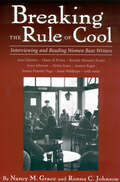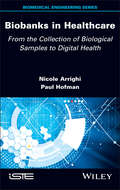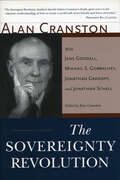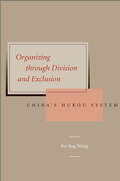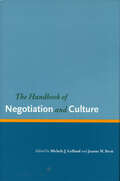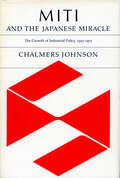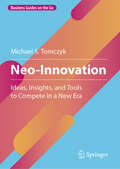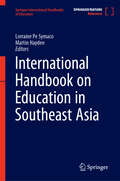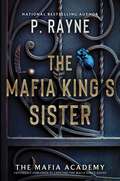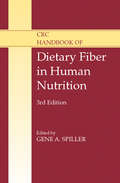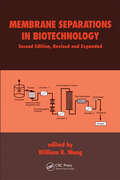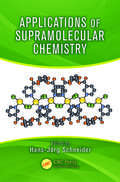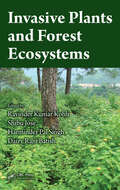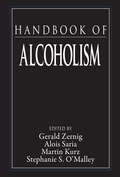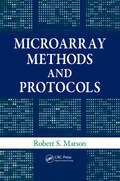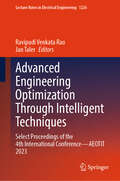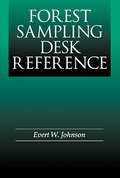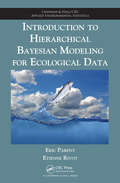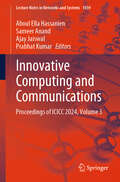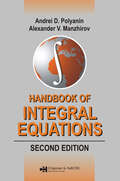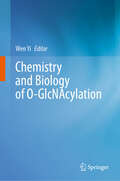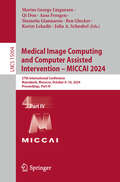- Table View
- List View
Breaking the Rule of Cool: Interviewing and Reading Women Beat Writers
by Nancy M. Grace Ronna C. JohnsonThe Beat movement nurtured many female dissidents and artists who contributed to Beat culture and connected the Beats with the second wave of the women’s movement. Although they have often been eclipsed by the men of the Beat Generation, the women’s contributions to Beat literature are considerable. Covering writers from the beginning of the movement in the 1950s and extending to the present, this book features interviews with nine of the best-known women Beat writers, including Diane di Prima, ruth weiss, Joyce Johnson, Hettie Jones, Joanne Kyger, Brenda Frazer (Bonnie Bremser), Janine Pommy Vega, Anne Waldman, and the critic Ann Charters. Each writer is presented by a biographical essay that details her literary or scholarly accomplishments. In these recent interviews the nine writers recall their lives in Beat bohemia and discuss their artistic practices. Nancy M. Grace outlines the goals and revelations of the interviews, and introduces the community of female Beat writers created in their conversations with the authors. Although they have not received attention equal to the men, women Beat writers rebelled against mainstream roles for young women and were exuberant participants in creating the Beat scene. Mapping their unique identities in the Beat movement, Ronna C. Johnson shows how their poetry, fiction, and memoirs broke the male rule that defined Beat women as silent bohemian “chicks” rather than artistic peers. Breaking the Rule of Cool combines the interviews with literary criticism and biography to illustrate the vivacity and intensity of women Beat writers, and argues that American literature was revitalized as much by the women’s work as by that of their male counterparts.
The Boy Who Cried Fabulous
by Leslea NewmanThe only thing Roger likes better than exploring the world around him is describing it. And Roger describes most things as fabulous! But his parents have a different view. They want Roger to see things the way they do, so they ban "fabulous" from his vocabulary. Fabulously illustrated by Peter Ferguson, this cheerful tale will have children rejoicing along with Roger at all the fabulous--no, marvelous! no, dazzling!--things that await him when he steps outside.
Biobanks in Healthcare: From the Collection of Biological Samples to Digital Health (ISTE Invoiced)
by Paul Hofman Nicole ArrighiBiobanks ensuring the governance and management of biological resources have become essential entities. The development of biotechnologies, the increased prevalence of biological drugs and the identification of biomarkers associated with molecular classifications of tissue lesions make it essential to have organized access to human biological samples, which have become precious and rare. The digital era and the production of massive data that comes with it have rendered biobanks the guarantors of the reproducibility of experiments and of the overall quality of medical research. Biobanks in Healthcare explores the upheaval linked to the massive deployment of digital health and precision medicine. The future of health biology lies in the deployment of biobanks in fields that have yet to be explored, putting them at the forefront of this extraordinary 21st-century research adventure.
Knowledge and Money: Research Universities and the Paradox of the Marketplace
by Roger L. GeigerMarket forces have profoundly affected the contemporary research university's fundamental tasks of creating and disseminating knowledge. They arguably have provided American universities access to greater wealth, better students, and stronger links with the economy. Yet they also have exaggerated inequalities, diminished the university's control over its own activities, and weakened the university's mission of serving the public. Incorporating twenty years of research and new data covering 99 research universities, Knowledge and Money explains this paradox by assessing how market forces have affected universities in four key spheres of activity: finance, undergraduate education, primary research, and participation in regional and national economic development. The book begins by chronicling how universities have enlarged revenues by optimizing tuitions, and how they have managed these funds. It reveals why competition for the best students through selective undergraduate admissions has led to increased student consumerism and weakened university control over learning. The book also explains why research has become an increasingly autonomous activity within the university, expanding faster than class instruction or faculty resources. Finally, it shows how the linkage of research to economic development has engendered closer ties with industry and encouraged the commercialization of knowledge.
The Sovereignty Revolution
by Alan CranstonThe Sovereignty Revolution is the late Senator Alan Cranston's analysis of the problems created by our current conception of sovereignty, "with every nation supreme inside its own borders and acknowledging no master outside them." As such, it is the last testament of a senior statesman with a deep moral commitment to nuclear disarmament. This book is an impassioned argument that these conceptions of sovereignty, and in turn the role of international institutions, must change before humanity can effectively resolve the world's increasingly global challenges, from international terrorism and the proliferation of nuclear weapons to climate change and poverty. Cranston argues that for humanity to survive the twenty-first century, we must adopt a more encompassing understanding of sovereignty, one that acknowledges the primacy of the individual, while emphasizing the importance of strengthening international law and increasing the authority of multilateral institutions, such as the United Nations. The book includes a foreword by Mikhail Gorbachev, an Introduction by Jonathan Schell, and response essays by Jane Goodall and Jonathan Granoff.
Organizing Through Division and Exclusion: China’s Hukou System
by Fei-Ling WangThis book is the first comprehensive examination of China's hukou (household registration) system. The hukou system registers and governs the 1.3 billion Chinese, while creating deep and rigid divisions and exclusions; in many domains the system determines how the Chinese live and shapes China's sociopolitical structure and socioeconomic development. This book shows that the system has made both positive and negative contributions to contemporary Chinese society: it has helped foster rapid economic growth and political stability, but also has reinforced social stratification, the rural-urban divide, regional inequalities, and discrimination and injustice. Using rich new materials, this book traces the history and development of the hukou system. It describes the functions, impact, and operational mechanisms of the system. It also analyzes the hukou in comparison with the systems of exclusion and discrimination in other nations, notably Brazil and India. This book presents important insights for understanding China's past, present, and future.
The Handbook of Negotiation and Culture
by Michele J. GelfandIn the global marketplace, negotiation frequently takes place across cultural boundaries, yet negotiation theory has traditionally been grounded in Western culture. This book, which provides an in-depth review of the field of negotiation theory, expands current thinking to include cross-cultural perspectives. The contents of the book reflect the diversity of negotiation—research-negotiator cognition, motivation, emotion, communication, power and disputing, intergroup relationships, third parties, justice, technology, and social dilemmas—and provides new insight into negotiation theory, questioning assumptions, expanding constructs, and identifying limits not apparent from working exclusively within one culture. The book is organized in three sections and pairs chapters on negotiation theory with chapters on culture. The first part emphasizes psychological processes—cognition, motivation, and emotion. Part II examines the negotiation process. The third part emphasizes the social context of negotiation. A final chapter synthesizes the main themes of the book to illustrate how scholars and practitioners can capitalize on the synergy between culture and negotiation research.
MITI and the Japanese Miracle: The Growth of Industrial Policy, 1925-1975
by Chalmers JohnsonThe focus of this book is on the Japanese economic bureaucracy, particularly on the famous Ministry of International Trade and Industry (MITI), as the leading state actor in the economy. Although MITI was not the only important agent affecting the economy, nor was the state as a whole always predominant, I do not want to be overly modest about the importance of this subject. The particular speed, form, and consequences of Japanese economic growth are not intelligible without reference to the contributions of MITI. Collaboration between the state and big business has long been acknowledged as the defining characteristic of the Japanese economic system, but for too long the state's role in this collaboration has been either condemned as overweening or dismissed as merely supportive, without anyone's ever analyzing the matter. The history of MITI is central to the economic and political history of modern Japan. Equally important, however, the methods and achievements of the Japanese economic bureaucracy are central to the continuing debate between advocates of the communist-type command economies and advocates of the Western-type mixed market economies. The fully bureaucratized command economies misallocate resources and stifle initiative; in order to function at all, they must lock up their populations behind iron curtains or other more or less impermeable barriers. The mixed market economies struggle to find ways to intrude politically determined priorities into their market systems without catching a bad case of the "English disease" or being frustrated by the American-type legal sprawl. The Japanese, of course, do not have all the answers. But given the fact that virtually all solutions to any of the critical problems of the late twentieth century—energy supply, environmental protection, technological innovation, and so forth—involve an expansion of official bureaucracy, the particular Japanese priorities and procedures are instructive. At the very least they should forewarn a foreign observer that the Japanese achievements were not won without a price being paid.
Neo-Innovation: Ideas, Insights, and Tools to Compete in a New Era (Business Guides on the Go)
by Michael S. TomczykAs civilization rapidly evolves into a new radical post-pandemic era, organizations and leaders need to adapt, innovate, and reimagine the future. This guidebook offers insights and strategies for leaders to thrive in this new era, empowering them to embrace their roles as Neo-Innovators, Neo-managers, and Neo-futurists. It is a concise “how-to” guide for anyone who is (or wants to be) involved in the development of radical innovations that solve problems and exploit opportunities in the post-pandemic world. Featuring actionable advice and examples from generative AI and the influencer culture to humanoid robots, self-driving cars and age-slowing therapies, this book equips young and experienced innovators, innovation leaders, and practitioners with the essential tools and mindset to tackle challenges and explore opportunities in a dynamic innovative landscape.
International Handbook on Education in Southeast Asia (Springer International Handbooks of Education)
by Martin Hayden Lorraine Pe SymacoThis International Handbook provides a detailed account of the education systems of 11 Southeast Asian nations, including Brunei Darussalam, Cambodia, Indonesia, Lao People’s Democratic Republic, Malaysia, Myanmar, the Philippines, Singapore, Thailand, Timor- Leste, and Vietnam. It presents a systematic sector-by-sector explanation of how these national education systems deliver educational services and respond to national and international issues and challenges. With 56 chapters, the International Handbook is the region’s most comprehensive educational reference source. In the first of its chapters, the editors introduce the regional context and draw attention to the distinctive characteristics of each of the 11 systems. Southeast Asia, representing 8.5% of the world’s population, is as dynamic as it is diverse. The International Handbook charts progress and establishes a benchmark for documenting future developments. It also provides a stepping-off point for more detailed investigations of decision-making processes and outcomes across the 11 national education systems.
The Mafia King's Sister: A Novel (The Mafia Academy Series #3)
by P. RayneThe spicy third chapter of The Mafia Academy Series- A forbidden love dark romance set at a mafia boarding school for the sons and daughters of the most powerful mafia lords.Aria CostaThe first time I saw Gabriele Vitale, some dark yearning deep inside me called to him and no matter what I did, I couldn’t stop wanting him. He’s made it clear that he wants nothing to do with me. But sometimes there’s a flicker of interest in his eye, and it’s enough to make me know he’s lying. When a stupid decision on my part throws us together, I get a first-hand view of the darkness he alludes to. One part of me is drawn to it. Another part of me is frightened by it. But not enough to stop from getting to know him better. He’s like a black hole, slowly sucking me in. As the darkness consumes me, I don’t care if it destroys me.Gabriele VitaleAria Costa is off-limits for many reasons, the least of which is that she’s Marcello Costa’s younger sister. She’s also too young and way too inexperienced to be with someone like me who enjoys dabbling in the darker side of sensuality. My father and her brother have made it clear that I am to steer clear. And I try. But it proves impossible to erase her from my mind. Whenever she’s near, my protective instincts roar, “Mine” and I’d do whatever it takes to keep her safe. Which is why after a foolish decision one night I’m forced to help her figure out who’s threatening her and what they want. I’d give my life for hers, and it might very well come to that.This title was previously published as Coveting the Mafia King's Sister.
CRC Handbook of Dietary Fiber in Human Nutrition
by Gene A. SpillerDietary fiber is widely recognized as an essential element of good nutrition. In fact, research on the use of fiber in food science and medicine is being conducted at an incredible pace. CRC Handbook of Dietary Fiber in Human Nutrition, Third Edition explores the chemistry, analytical methodologies, physiological and biochemical aspects, clinical a
Membrane Separations in Biotechnology
by Wiliam K. WangThis text details the relationship between membrane technology and bioprocesses, discussing applications. This second edition refines and optimizes key features of the first edition - and features new illustrative case studies. The book examines advantages and disadvantages of using standard and new membrane technologies; analyzes a wide range of a
Applications of Supramolecular Chemistry
by Hans-Jörg SchneiderApplications of Supramolecular Chemistry introduces the use of non-covalent interactions and molecular recognition for many fields. Applications include the analysis of technically, medically, and environmentally important chemical compounds, their separation, purification and removal, and the design of new materials, including supramolecular elect
Invasive Plants and Forest Ecosystems
by Shibu Jose Ravinder Kumar Kohli Harminder Pal Singh Daizy Rani BatishAs the worldwide human population explodes and trade becomes increasingly globalized, the transboundary movement of plant species from their place of origin to foreign regions is escalating and expected to experience continued growth in the coming decades. Invasive non-native species pose one of the greatest challenges for natural resource managers who are charged with the maintenance of biological diversity and the sustainable production of forest resources. With international contributors presenting an informed and integrated approach to the control of havoc-wrecking species, Invasive Plants and Forest Ecosystems provides the most updated information on invading plants, their impacts on forest ecosystems, and control strategies. This text addresses such important issues as the socioeconomic and policy aspects of plant invasion and offers complete coverage of their ecological impacts and the varied levels of threats in diverse situations.
Handbook of Alcoholism (Handbooks in Pharmacology and Toxicology)
by Gerald Zernig Alois Saria Martin Kurz Stephanie S. O’MalleyWhile the war on drugs continues to attract world attention, it is often overlooked that alcoholism remains a major worldwide health concern. No matter what your expertise, the CRC Handbook of Alcoholism can help you acquire the necessary skills to treat problem drinkers and alcohol-dependent patients.In three sections - Patient Care, Research,
Microarray Methods and Protocols
by Robert S. MatsonA Step-by-Step Guide to Present and Future Uses of Microarray TechnologyMicroarray technology continues to evolve, taking on a variety of forms. From the spotting of cDNA and the in situ synthesis of oligonucleotide arrays now come microarrays comprising proteins, carbohydrates, drugs, tissues, and cells. With contributions from microarray experts
Batch Fermentation: Modeling: Monitoring, and Control (Chemical Industries)
by Ali Cinar Satish J. Parulekar Cenk Undey Gulnur BirolIllustrating techniques in model development, signal processing, data reconciliation, process monitoring, quality assurance, intelligent real-time process supervision, and fault detection and diagnosis, Batch Fermentation offers valuable simulation and control strategies for batch fermentation applications in the food, pharmaceutical, and chemical industries. The book provides approaches for determining optimal reference trajectories and operating conditions; estimating final product quality; modifying, adjusting, and enhancing batch process operations; and designing integrated real-time intelligent knowledge-based systems for process monitoring and fault diagnosis.
Advanced Engineering Optimization Through Intelligent Techniques: Select Proceedings of the 4th International Conference—AEOTIT 2023 (Lecture Notes in Electrical Engineering #1226)
by Ravipudi Venkata Rao Jan TalerThis book comprises peer-reviewed papers presented at the 4th International Conference on Advanced Engineering Optimization Through Intelligent Techniques (AEOTIT) 2023. The book combines contributions from academics and industry professionals and covers advanced optimization techniques across all major engineering disciplines like mechanical, manufacturing, civil, electrical, chemical, computer, and electronics engineering. The book discusses different optimization techniques and algorithms such as genetic algorithm, non-dominated sorting genetic algorithm-II, and III, particle swarm optimization, gravitational search algorithm, ant lion optimization, dragonfly algorithm, teaching–learning-based optimization algorithm, grey wolf optimization, Jaya algorithm, Rao algorithms, many other latest meta-heuristic techniques, machine learning algorithms, and their applications. Various multi-attribute decision-making methods such as AHP, TOPSIS, PROMETHEE, desirability function, SWARA, R-method, BHARAT method, Taguchi method, fuzzy logic, and their applications are also discussed. This book serves as a valuable reference for students, researchers, and practitioners and helps them in solving a wide range of optimization problems.
Forest Sampling Desk Reference
by Evert W. JohnsonShould damaged trees be clear cut and replanted or allowed to recover naturally? Is the deer herd large enough to survive hunting pressure? Managing forest resources entails numerous decisions. Making these decisions intelligently requires sound information about the resource in question. Ideally, assessments should be based on the entire populatio
Introduction to Hierarchical Bayesian Modeling for Ecological Data (Chapman & Hall/CRC Applied Environmental Statistics)
by Eric Parent Etienne RivotMaking statistical modeling and inference more accessible to ecologists and related scientists, Introduction to Hierarchical Bayesian Modeling for Ecological Data gives readers a flexible and effective framework to learn about complex ecological processes from various sources of data. It also helps readers get started on building their own statisti
Innovative Computing and Communications: Proceedings of ICICC 2024, Volume 3 (Lecture Notes in Networks and Systems #1039)
by Aboul Ella Hassanien Sameer Anand Ajay Jaiswal Prabhat KumarThis book includes high-quality research papers presented at the Seventh International Conference on Innovative Computing and Communication (ICICC 2024), which is held at the Shaheed Sukhdev College of Business Studies, University of Delhi, Delhi, India, on 16–17 February 2024. Introducing the innovative works of scientists, professors, research scholars, students, and industrial experts in the field of computing and communication, the book promotes the transformation of fundamental research into institutional and industrialized research and the conversion of applied exploration into real-time applications.
Handbook of Integral Equations: Second Edition
by Alexander V. Manzhirov Polyanin PolyaninUnparalleled in scope compared to the literature currently available, the Handbook of Integral Equations, Second Edition contains over 2,500 integral equations with solutions as well as analytical and numerical methods for solving linear and nonlinear equations. It explores Volterra, Fredholm, Wiener�Hopf, Hammerstein, Uryson, and other equa
Chemistry and Biology of O-GlcNAcylation
by Wen YiO-linked N-acetylglucosamine (O-GlcNAc) is a prevalent post-translational modification of numerous intracellular proteins. This modification has recently emerged as a key regulator of various important biological processes, including gene transcription, stress response, metabolic homeostasis, and immune regulation. Given the critical role of O-GlcNAc in normal physiology, increasing evidence has now demonstrated that deregulation of O-GlcNAc is closely associated with the development and progression of various diseases, including neurodegeneration, cardiovascular disease, and cancer. This book provides a comprehensive overview of the current progress and understanding of this modification in biology, and likely provides new research directions in the future.
Medical Image Computing and Computer Assisted Intervention – MICCAI 2024: 27th International Conference, Marrakesh, Morocco, October 6–10, 2024, Proceedings, Part IV (Lecture Notes in Computer Science #15004)
by Marius George Linguraru Aasa Feragen Ben Glocker Julia A. Schnabel Karim Lekadir Qi Dou Stamatia GiannarouThe 12-volume set LNCS 15001 - 15012 constitutes the proceedings of the 27th International Conferenc on Medical Image Computing and Computer Assisted Intervention, MICCAI 2024, which took place in Marrakesh, Morocco, during October 6–10, 2024. MICCAI accepted 857 full papers from 2781 submissions. They focus on neuroimaging; image registration; computational pathology; computer aided diagnosis, treatment response, and outcome prediction; image guided intervention; visualization; surgical planning, and surgical data science; image reconstruction; image segmentation; machine learning; etc.
